Infrastructure pinpointed to spur socioeconomic fortunes
Earlier this month, Tran Sy Thanh, Chairman of Hanoi People’s Committee asked to utilise all the efforts to complete ring road No.4. “We have not much time, so I ask all relevant departments and units to do the utmost to accomplish site clearance on time, to meet the needs of socioeconomic development of the country,” said Thanh.
Several days previously, the committee asked relative agencies to proactively implement assigned tasks on site clearance of the project, striving to hand over 70 per cent of premises in the area of each district before July 2023.
Ring Road 4 for the capital is deemed an important national project, with a total length of over 112km and funding of $3.73 billion. The starting point is at Hanoi-Lao Cai Highway with the endpoint at Noi Bai-Halong Highway, crossing over and closely connecting the three localities of Hanoi, Hung Yen, and Bac Ninh, which are key manufacturing hubs in the north of the country.
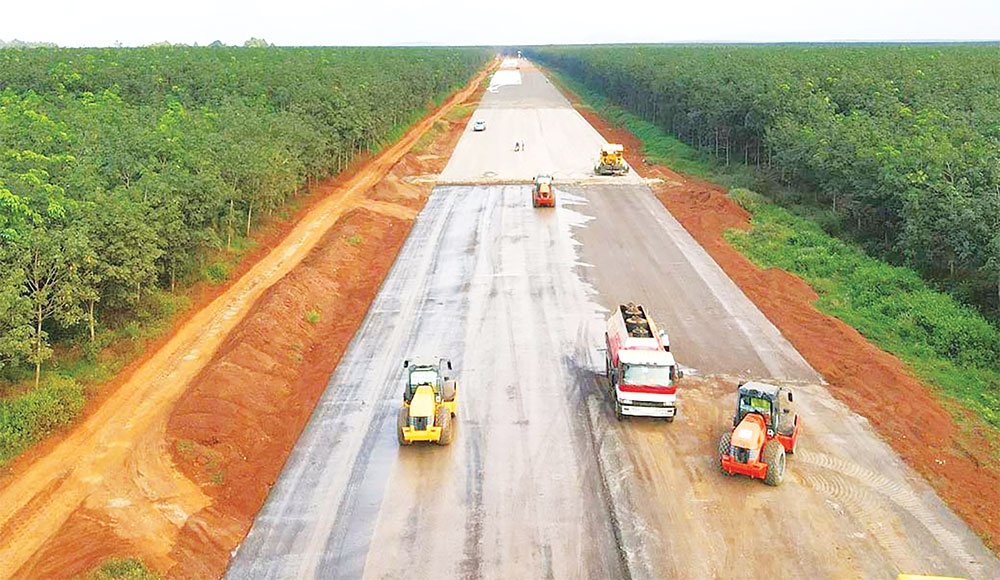 |
| Over the past decade, Vietnam has put around 1,000km of new expressways into operation, photo Le Toan |
Meanwhile, the North-South Expressway, the largest and most complex road construction project in the country, is hoping to see boosted progress. Those involved in the Cam Lam-Vinh Hao section, one of 11 component projects in the eastern cluster, have just asked for an additional $8.7 million to be added to the state budget capital plan of the project.
Dang Tien Thang, vice general director of Cao Lam-Vinh Hao Expressway JSC, said that by the end of October, the project had disbursed and paid $42 million, reaching 93 per cent of the plan. “If the Ministry of Transport transfers capital from other works, the Cam Lam-Vinh Hao section will have an additional amount of about $11.7 million disbursed in the last two months of the year. With the current construction capacity, weather conditions have entered the dry season, and the goal of disbursing the amount is absolutely feasible,” said Thang.
In the south, numerous transport projects are hoped to be accomplished by 2026, such as belt road No.3 surrounding Ho Chi Minh City, and by 2030, which includes expansion of Ho Chi Minh City-Long Thanh-Dau Giay and Ho Chi Minh City-Trung Luong expressways, and construction of Bien Hoa-Vung Tau, Ho Chi Minh City-Chon Thanh, Dau Giay-Lien Khuong, and Ho Chi Minh City-Moc Bai expressways.
The upgrading of road infrastructure across the country has been strengthening the connection between big cities and satellite provinces/cities as well as among economic zones, contributing to economic development. Over the past decade, Vietnam has seen 1,000km more expressway put into operation.
“The development of transport infrastructure will enable the economy to optimise resources, and take advantage of comparative advantages between regions. Commodity production and tourism services will grow rapidly through the exchange and distribution system, and smoother transport. Vietnam will be levelled up in the assessment of investors,” said Minister of Planning and Investment Nguyen Chi Dung at a meeting discussing the general master plan of the country.
“The construction of transport infrastructure is also significant, contributing to improving the investment environment in Vietnam, enhancing the efficiency and competitiveness of the economy, and creating conditions to attract investment for infrastructure development,” added Dung.
In the 2023 socioeconomic development plan, the government asks to perfect the strategic infrastructure system synchronously, and speed up progress of a number of national and inter-regional transport infrastructure works, large urban infrastructure, and urban railway projects.
It is necessary to strengthen the mobilisation of social resources for strategic infrastructure investment, especially in the form of public-private partnerships (PPPs). The plan highlights striving to complete and put into operation a number of expressway sections in 2023 like Nghi Son-Dien Chau, Nha Trang-Cao Lam, and My Thuan-Can Tho; a number of urban railway projects; and upgrading, expanding, and exploiting dual-use airports like Phan Thiet, Thanh Son, Chu Lai, Lao Cai, Na San, and Vinh.
The development of transport infrastructure has contributed significantly to mobilising more foreign investment in the country. Along with the increase in the length of the highways every year, foreign direct investment (FDI) inflows have soared sharply from $14 billion of total registered investment and $10.46 billion of disbursement FDI in 2012 to $24.4 billion and $15.8 billion respectively in 2016, to the peak of $38.02 billion and $20.38 billion in 2019, and slight decline of $31.15 billion and $19.74 billion in 2021.
For 2022, disbursement FDI is expected to reach about $21-22 billion, an increase of 6.5-11.5 per cent on-year. The performance in 2023 is forecasted at $22-23 billion, while total registered investment is expected at $36-38 billion, equivalent to the peak before the pandemic.
“Infrastructure development is one of the three breakthroughs determined by the Party and the state for boosting economic growth. The resolution of the 13th National Party Congress has set a target of completing the construction of 2,000km of expressway within this term of office [2021-2025],” Prime Minister Pham Minh Chinh stated.
Early this year, the government enacted a resolution on key tasks and solutions for the implementation of the country’s socioeconomic development plan and state budget estimates for 2022 ordered that the rate of public investment disbursement for this year must be 100 per cent.
“Public investment must act as a primer to attract all legitimate resources for national development and economic growth, particularly through PPPs,” the resolution stated.
The resolution noted that this year, the government will speed up the building of key infrastructure projects including the North-South Expressway, Long Thanh International Airport, My Thuan-Can Tho Expressway, and metro lines in Hanoi and Ho Chi Minh City.
| Andrew Jeffries-Country director for Vietnam Asian Development Bank
Vietnam has been on a sustained path of transformation from a low-income to a middle-income country since the mid-1980s. Rapid economic growth (averaging more than 6.8 per cent annually during 1990-2019) has transformed Vietnam from one of the poorest countries in Asia into one of the world’s most dynamic economies. Rapid economic growth, however, has put stress on Vietnam’s infrastructure. Despite significant investment, the road network consists predominantly of unpaved, narrow, and local road sections. Only 65 per cent of Vietnam’s total road network are paved in 2018, compared to over 77 per cent in Thailand or Malaysia. The Directorate for Roads of Vietnam estimates that the current expenditure for road maintenance works meets only 44 per cent of the minimum annual requirements. As a result, more than 65 per cent of the national roads are not regularly maintained. Underdeveloped infrastructure and weak multimodal links have increased Vietnam’s logistics costs, which are 18 per cent of GDP in 2017. This is much higher than logistics costs of Thailand (8.5 per cent of GDP), undermining the country’s economic competitiveness. In Vietnam, most infrastructure investment is financed by the public sector. Although, the development of transport infrastructure, especially the road transport system, whose backbone is highways, is always a top priority when allocating national resources, public investment only meets 30 per cent of total demand during the 2016-2020 period. Recent data and government plans show that infrastructure development remains a priority of the government in the 2021-2025 period. In the next four years, Vietnam plans to invest $119 billion in infrastructure. However, those resources are not enough to meet the country’s infrastructure financing needs. This may suggest additional mobilisation of funds from different sources to close the financing gap, including government bonds, official development assistance, and private sector financing. Organisations like ours can assist its developing member countries, including Vietnam, to expand their sources of infrastructure financing. |
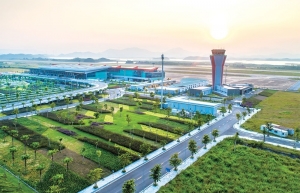 | PPPs driving small airport investment Vietnam wants to increase investment in domestic airports and establish better infrastructure, but capital will only increase when the institutional conditions are further improved. |
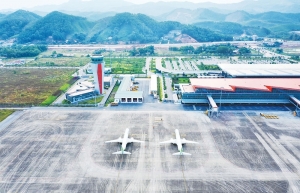 | Utilising national advantages with crucial infrastructure Small airports and dual-use airports are expected to be valuable infrastructure fulcrums for many remote localities to attract investment and exploit the advantages of tourism, if selected and added to the plan and early investment implementation. |
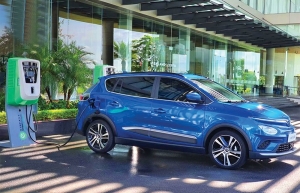 | Infrastructure crucial for e-car future Green and cleaner transport initiatives are being promoted in Vietnam, with more top brands hoping to offer the future of electric vehicles. However, the inevitable complexity of modernising the country’s infrastructure will have to be addressed sooner rather than later. |
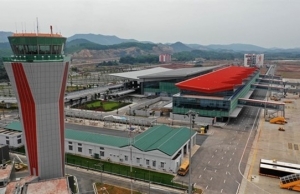 | Airport infrastructure investment needs private involvement: insiders Public investment alone is insufficient to finance new airport infrastructure, exposing the need for more favourable policies to draw in private investment. |
What the stars mean:
★ Poor ★ ★ Promising ★★★ Good ★★★★ Very good ★★★★★ Exceptional
Related Contents
Latest News
More News
- Global partnerships key to Vietnam’s IFC development (December 26, 2025 | 16:18)
- Vingroup pulls out of bid to invest in North-South high-speed railway (December 26, 2025 | 11:42)
- Strengthening supply chains through trade promotions and customs reform (December 24, 2025 | 14:00)
- PM orders investment model for North–South high-speed rail (December 22, 2025 | 17:43)
- LS Eco Energy to invest in Vietnam rare earth sector (December 22, 2025 | 17:31)
- Government moves to establish International Financial Centre (December 21, 2025 | 21:00)
- Vietnam's IFC to target global investment flows (December 21, 2025 | 18:00)
- Two national hospitals expand capacity with new facilities (December 20, 2025 | 09:00)
- Ha Tinh breaks ground on major Vingroup industrial and energy projects (December 19, 2025 | 18:24)
- EVN launches major power infrastructure projects nationwide (December 19, 2025 | 18:17)


 Tag:
Tag:





















 Mobile Version
Mobile Version